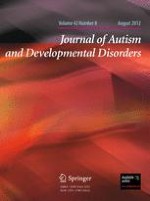01-08-2012 | Original paper
Behavioral and Physiological Responses to Child-Directed Speech of Children with Autism Spectrum Disorders or Typical Development
Gepubliceerd in: Journal of Autism and Developmental Disorders | Uitgave 8/2012
Log in om toegang te krijgenAbstract
Young boys with autism were compared to typically developing boys on responses to nonsocial and child-directed speech (CDS) stimuli. Behavioral (looking) and physiological (heart rate and respiratory sinus arrhythmia) measures were collected. Boys with autism looked equally as much as chronological age-matched peers at nonsocial stimuli, but less at CDS stimuli. Boys with autism and language age-matched peers differed in patterns of looking at live versus videotaped CDS stimuli. Boys with autism demonstrated faster heart rates than chronological age-matched peers, but did not differ significantly on respiratory sinus arrhythmia. Reduced attention during CDS may restrict language-learning opportunities for children with autism. The heart rate findings suggest that young children with autism have a nonspecific elevated arousal level.
